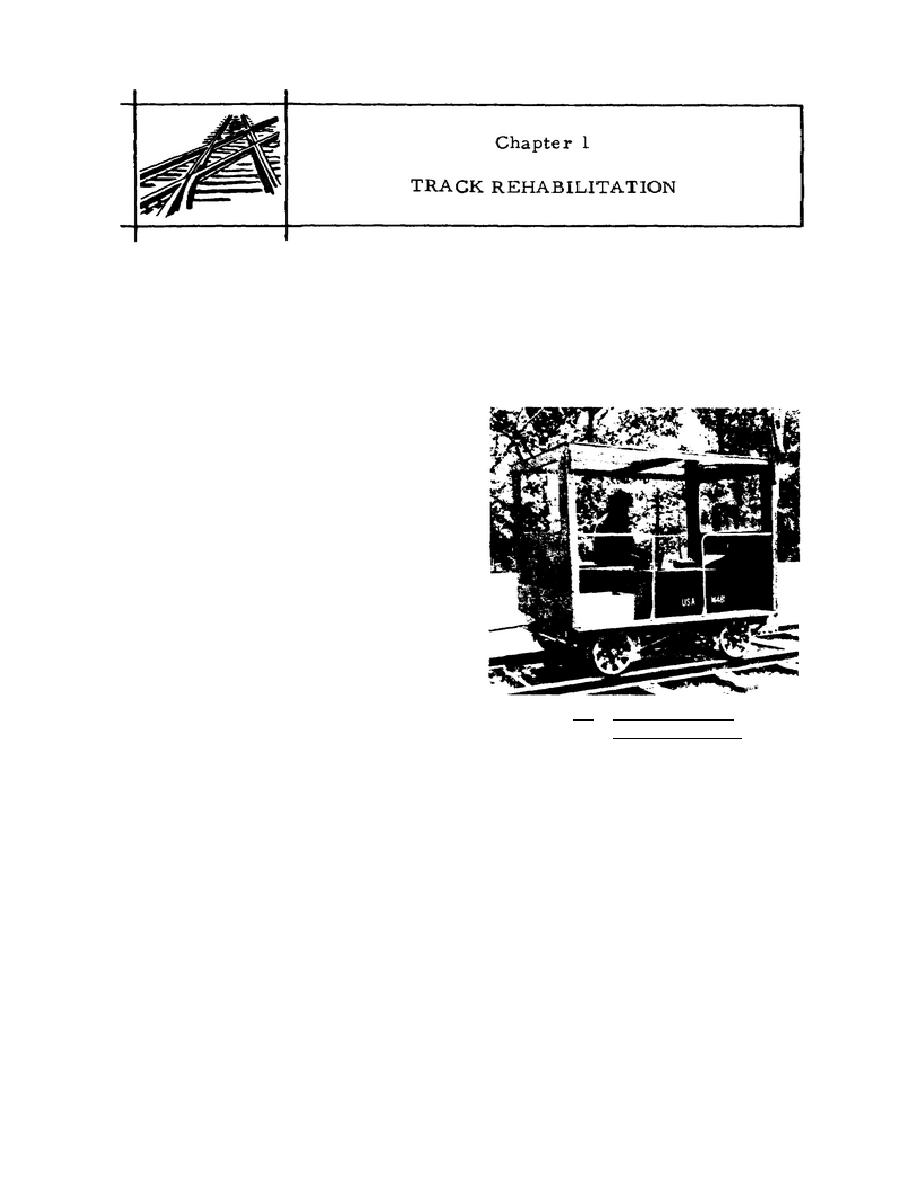
1.1.
INTRODUCTION
When rehabilitation of a rail line is proposed, the line must be reconnoitered. To obtain a quick, general
impression of the line, an aerial reconnaissance is preferred, supplemented by a personal, on-the-ground
inspection. An engineer officer and a transportation railway service officer should reconnoiter it jointly. If the
reconnaissance shows the line is worth rehabilitating, the officers then locate the points on
the line where major damage or destruction has
occurred and determine the amount of rehabilitation
or construction effort required to repair the damage.
They also determine what portions of the line meet
the operating and maintenance standards of the
transportation railway service and if any additional
facilities must be constructed. As soon as possible
after the aerial reconnaissance is completed, it
should be supplemented by a close, on-the-spot
inspection of the line. This may be done on foot, by
jeep, or by a motorized rail car, such as the gasoline-
operated one pictured in figure 1.2. Detailed
information of damage to the line should be obtained
and recorded during the inspection.
The information on the rail line defines what
types of work are necessary to rehabilitate the track.
It is likely that surfacing is required in some areas
Figure 1.2. Gasoline-operated
and that rails and ties have to be replaced. Each of
Railway Motor Car.
these jobs is discussed in detail in the three sections
of this chapter.
7



 Previous Page
Previous Page
